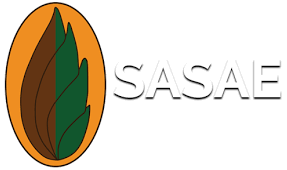Characteristics of maize growing farmers, varietal use and constraints to increase productivity in selected villages in the Eastern Cape province of South Africa
DOI:
https://doi.org/10.17159/2413-3221/2020/v48n2a538Keywords:
maize, focus group discussions, socio-economic, rural livelihood, agricultural extensionAbstract
The need to increase self-sufficiency of rural agricultural systems has been a centre of focus for many extension programs aimed at rural development and improved livelihoods. Numerous biotic, abiotic and socio-economic factors affect maize production for resource poor farmers in the Eastern Cape (EC), which is one of the poorest Provinces in South Africa. Focus group discussions and semi-structured questionnaires were used to identify farmer characteristics, and specific production constraints influencing maize productivity in Jixini and Mkhwezo villages, of O. R. Tambo District in the EC Province. Elderly farmers who are above 56 years dominated the studied farming communities. The predominant varieties used were local landraces (53%) followed by hybrids (31%) and improved open pollinated varieties (OPVs) (11%). Farmers preferred local landraces as they were considered more palatable. Unmarried farmers were the least productive farmer group due to shortages of labour, use of landrace varieties and inadequate fertilizer. The main production constraints faced by farmers, were too much rain, pests and diseases infestation, drought stress due to climate change, and lack of fencing of the out-fields. Increasing the involvement of youths in agricultural activities could improve maize productivity. Maize breeding programs should solicit information on farmer-preferred traits and incorporate them into the improved varieties to enhance their desirability and adoption. Targeting of varieties should be guided by the most common constraints affecting maize productivity in a specific location rather than issuing blanket recommendations. Additionally, agricultural extension programs could improve their service delivery by having good knowledge of target-farmer traits, their farming practices and prevailing constraints. Information in this manuscript can go a long way in improving extension service delivery in the EC Province of the country.
Downloads
Downloads
Published
Issue
Section
License
Copyright (c) 2022 Vimbayi Grace Petrova Chimonyo, CS Mutengwa, Cornelius Chiduza, Liliane Ngoune Tandzi

This work is licensed under a Creative Commons Attribution 4.0 International License.







.png)